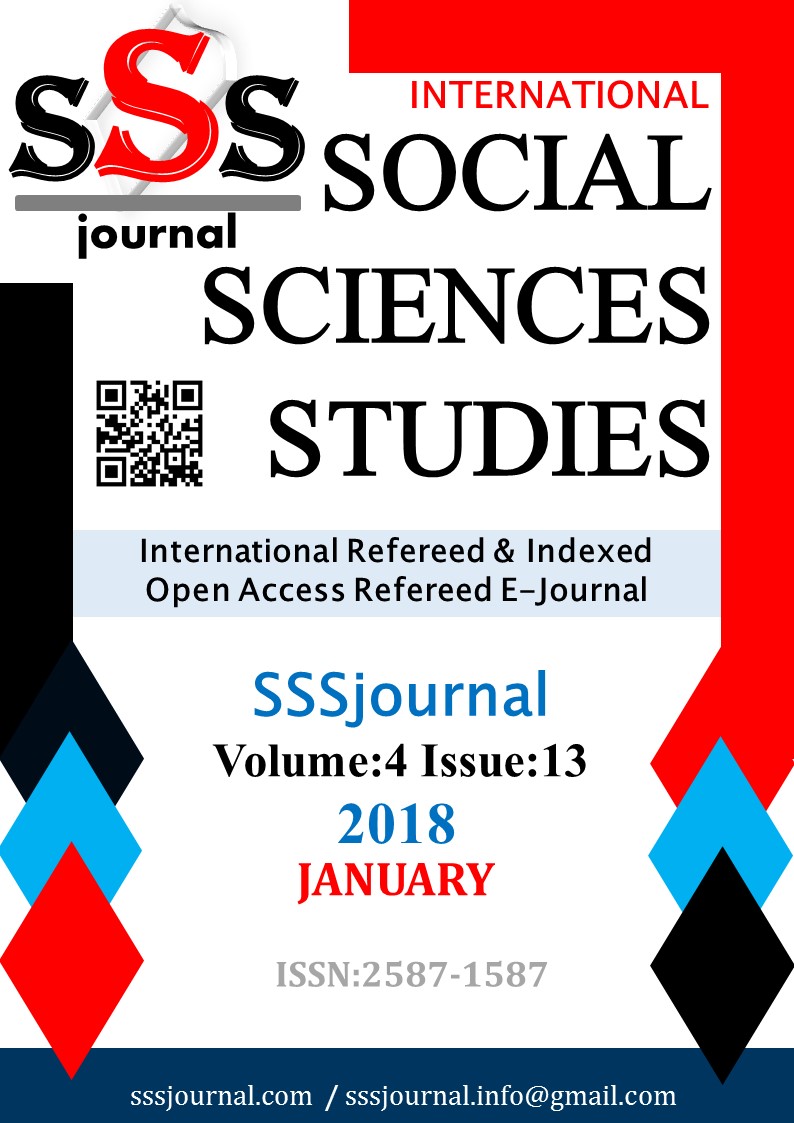Author :
Abstract
Osmanlı Devleti’nin I. Dünya savaşında yenilmesinden sonra Filistin, 1948 yılına kadar İngiliz mandası olmuştur. İçerisinde Müslümanlar tarafından kutsal kabul edilen Mescid i Aksa’yı ihtiva etmesinden dolayı Kudüs ve çevresinin İngiliz işgali altına girmiş olması Filistinli âlim şahsiyetleri derinden yaralamıştır. Bu âlimlerden birisi olan Nebhânî, İslami ilimler alanında yetmiş civarında eser yazmış önemli bir isimdir. Bir taraftan İngiliz işgaline karşı Filistin’de direniş ruhunu takviye etmeye çalışırken diğer taraftan “küffar”dan daha tehlikeli gördüğü ve ehl i bidat olarak değerlendirdiği dönemin önde gelen “ıslahatçı” isimlerine yönelik mücadelede bulunmuştur. Edebi yönü güçlü olan Nebhâni, klasik Arap şiirinin ana konularından biri olan “hiciv”i hasımlarına karşı kullanmaktan geri durmamış ve manzum eserlerinin bir kısmını bu amaca yönelik kullanmıştır. Bu makalede Nebhâni’nin hayatı ve eserleri genel olarak tanıtıldıktan sonra onun “hiciv” içerikli manzum bir eserinin şekil ve içerik bakımından incelenmesi yapılacaktır.
Keywords
Abstract
After the defeat of the Ottoman Empire in the First World War, Palestine became an English mandate until 1948. The fact that Jerusalem and its surroundings were under British occupation because it contains the Masjid i Aqsa, which is considered sacred by the Muslims, deeply hurt the Palestinian scholars. Nebhani, one of these scholars, is an important figure who wrote about 70 works in Islamic sciences. While struggling to reinforce the resistance spirit in Palestine against the British occupation from one side, he struggled against the leading names of the period when he regarded the other side as more dangerous than "kuffar" and considered the people as bidat. Nebhâni, a powerful literary force, did not stop using "satire", one of the themes of classical Arabic poetry, against his adversaries, and used some of his poetic works for this purpose. In this article, after Nebhani's life and works are introduced in general, his "satirical" works of verse will be analyzed in terms of form and content.
Keywords
- Baypınar, Yüksel, “Hiciv Kavramı Üzerine Bir İnceleme”, 31-37, erişim 20 Kasım 2017,
- Baypınar, Yüksel, “Hiciv Kavramı Üzerine Bir İnceleme”, 31-37, erişim 20 Kasım 2017, http://dergiler.ankara.edu.tr/dergiler/26/1048/12644.pdf.
- Çiftçi, Faruk, “Hassân b. Sabit'in Hz. Peygamber İçin Söylediği Mersiyeler”, KSÜ İlahiyat Fakültesi Dergisi. 4 (2004): 79-95.
- Demirel, H. Gamze, “Klasik Türk Edebiyatı Geleneğinde Hiciv”, Türkiye Araştırmaları Literatür Dergisi. 5/10 (2007): 131-154.
- LeBoeuf, Megan, "The Power of Ridicule: An Analysis of Satire" (2007), Senior Honors Projects. Paper 63.Nebhânî, Şevâhid’ul-Hak fi’l-istigâseti bi seyyidi’l-halk, Beyrut: Dâru’l-kutubi’l-ilmiyye, 2007.
- Nebhânî, Sebîlu’n-necât fi’l-hubbi fillâh ve’l-buğdi fillâh, nşr. Bessâm Abdulvehhâb el-Câbî, Şam: Dâru İbn Hazm, 1991.
- Teftazânî, Sa’deddîn, Muhtasaru’s-Sa’d, thk. Ahmed el-Humeyd el-Hindâvî, Beyrut: el-Mektebetu’l-asriyye, 2010.
- Sevâfirî, Kâmil, el-Edebu’l-Arabiyyi’l-muâsır fî Filistîn, Kahire: Dâru’l-maârif, 1975.
- Özervarlı, M. Sait, “Nebhâni, Yûsuf b. İsmail, Türkiye Diyanet Vakfı İslam Ansiklopedisi Ankara: TDV Yayınları, 2006, 32: 471-472.
- Taşdelen, Hasan, “İslâm’ın İlk Dönemine Ait Bir Hiciv Örneği: Hassân b. Sâbit’in Hemziyye’si”, Uludağ Üniversitesi İlâhiyat Fakültesi Dergisi. 18/1 (2009): 299-318.
- Ziriklî, Hayrettin, el-A’lâm, 8 Cilt. Beyrut: Dâru’l-ilm li’l-melâyîn, 2002.





